Coloring activities can greatly reduce your anxiety through mindful engagement and creative expression. You'll find particular relief in coloring mandalas, which promote meditation-like focus, and nature-themed designs that connect you with calming outdoor elements. Abstract patterns and geometric shapes help quiet racing thoughts, while cool colors like blue and green naturally lower stress levels. Try using colored pencils for better control, and consider joining coloring groups for added support. Whether you prefer traditional coloring books or digital apps, you can practice anywhere, anytime. There's much more to discover about this therapeutic technique's ability to ease your mind.
Understanding Color Therapy for Anxiety
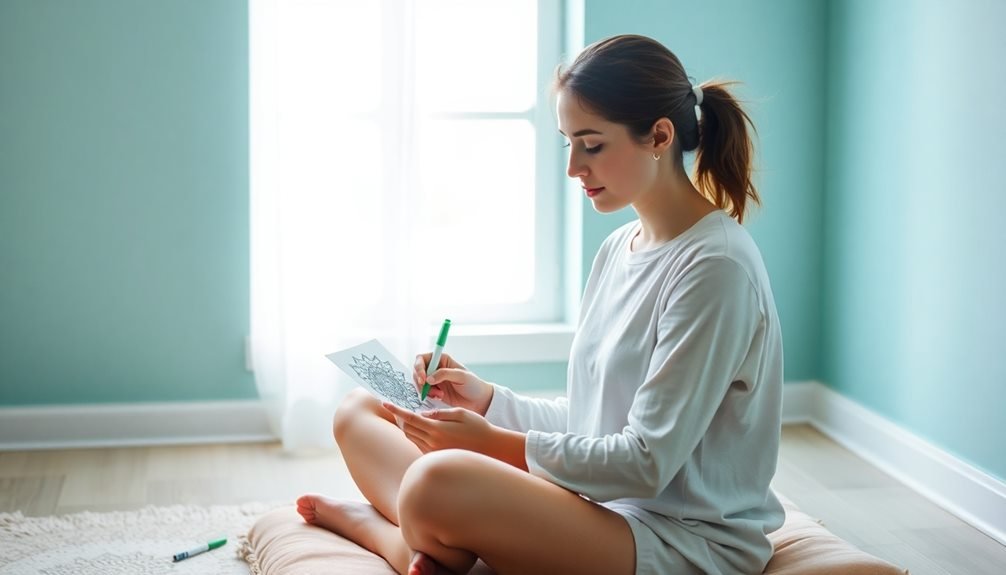
Color therapy, also known as chromotherapy, harnesses the psychological effects of different hues to reduce stress and anxiety. When you're feeling overwhelmed, certain colors can help calm your nervous system and promote emotional balance.
Research shows that different colors affect your brain chemistry and trigger specific emotional responses.
You'll find that cool colors like blue and green typically produce calming effects. Blue reduces blood pressure and heart rate, while green helps create a sense of harmony and balance.
Purple can enhance meditation and spiritual awareness, making it ideal for mindfulness activities.
Warm colors serve different therapeutic purposes. Yellow boosts mood and optimism, while orange stimulates creativity and social interaction.
Pink has been shown to have a physically calming effect, which is why it's often used in stress-reduction settings.
When you're choosing coloring activities for anxiety relief, consider your personal color preferences and emotional needs. You might notice that certain colors resonate more strongly with you than others.
Start by experimenting with different hues in your coloring projects, and pay attention to how each color affects your mood and stress levels.
Mandalas for Mental Peace
Traditionally, mandalas have served as powerful meditation tools, combining intricate circular patterns with deep symbolic meaning. When you color mandalas, you're engaging in a practice that helps quiet your mind and reduce anxiety through focused attention. The repetitive nature of mandala coloring creates a state similar to meditation, allowing you to let go of racing thoughts and enter a more peaceful mental space.
- Start from the center and work your way outward, symbolically releasing negative energy while strengthening your connection to your inner self.
- Choose colors intuitively rather than planning them out – this helps bypass your analytical mind and taps into emotional healing.
- Set aside 15-30 minutes of uninterrupted time to maximize the anxiety-reducing benefits of mandala coloring.
You'll find that mandala coloring offers a unique combination of structure and creative freedom. The circular design naturally draws your eye inward, helping center your thoughts, while the symmetrical patterns create a sense of order and harmony.
As you progress through each section, you'll likely notice your breathing becoming more regulated and your muscles relaxing, making mandalas an effective tool for anxiety management.
Nature-Themed Coloring Pages
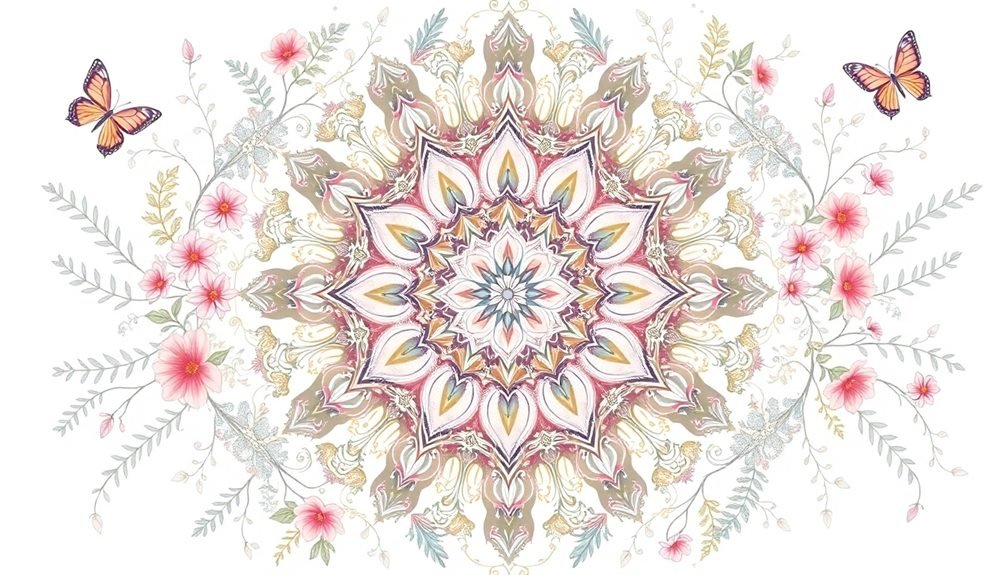
Nature-themed coloring pages let you explore peaceful forest landscapes and intricate botanical designs that naturally reduce stress levels.
You'll find yourself getting lost in detailed scenes of towering trees, winding paths, and gentle woodland creatures as you fill each space with your chosen colors.
Floral patterns offer another soothing option, where you can spend time carefully coloring delicate petals and leaves while your mind settles into a state of calm focus.
Calming Forest Scenes
Tranquil forest scenes provide one of the most effective subjects for anxiety-reducing coloring activities. When you're feeling overwhelmed, coloring detailed woodland landscapes can transport you to a peaceful natural setting. The repetitive motions of filling in tree bark patterns, leafy canopies, and forest floor elements help quiet racing thoughts and promote mindfulness.
- Dense evergreen forests with intricate pine needle patterns that require focused attention
- Sunlit clearings featuring wildflowers, mushrooms, and fallen logs that offer variety in textures
- Winding forest paths that lead your eye and imagination deeper into the scene
Choose forest coloring pages that match your current stress level and concentration ability. When you're highly anxious, start with simpler designs featuring larger spaces and fewer details. As you feel calmer, progress to more complex scenes with fine details like individual leaves, tree rings, and forest creatures.
The natural elements in forest scenes connect you to the outdoors even when you're inside, and their organic shapes are less rigid than geometric patterns. You'll find that following the natural flow of branches and vines with your coloring strokes creates a soothing rhythm that eases tension.
Floral Stress Relief Patterns
Serenity blooms within the pages of floral coloring patterns, offering a gentle escape from daily stresses. When you're feeling overwhelmed, these intricate botanical designs can help ground your racing thoughts and restore inner calm. Floral patterns combine nature's beauty with structured repetition, creating an ideal environment for mindful focus.
You'll find various floral designs to match your mood and concentration level. Simple daisy patterns work well when you're seeking quick relief, while complex rose mandalas demand deeper attention for extended relaxation. The circular patterns of sunflowers and the delicate detail of wildflower meadows provide different therapeutic experiences.
You can enhance the calming effect by selecting colors that reflect your desired emotional state – soft pastels for tranquility or vibrant hues for energy.
To maximize the anxiety-reducing benefits, try focusing on one petal at a time. Notice how each curve flows into the next, creating a natural rhythm that helps slow your breathing.
Whether you're coloring morning glories twining up a trellis or filling in abstract flower motifs, these patterns help transform anxious energy into creative expression.
Abstract Pattern Coloring Benefits
When you color intricate abstract patterns, you'll experience a meditative state similar to focused breathing exercises, as your mind zeroes in on the repetitive shapes and designs.
Your brain's activity shifts into a calmer mode while you're filling in geometric patterns, leading to reduced stress levels and improved mental clarity.
The act of coloring complex patterns engages both your creative and analytical brain regions, making it an effective tool for mindfulness practice.
Meditation Through Pattern Design
Abstract pattern coloring provides three key meditative benefits that can help quiet a racing mind. When you engage in pattern design coloring, you're creating a focused state similar to traditional meditation practices. The repetitive nature of filling in geometric shapes and intricate patterns helps your brain shift from stressed beta waves to more relaxed alpha waves.
- Your attention naturally centers on the present moment as you choose colors and fill spaces, blocking out worrying thoughts.
- The rhythmic motion of coloring complex patterns creates a flow state similar to mindfulness meditation.
- Your breathing naturally slows and synchronizes with your coloring movements, promoting relaxation.
You'll find that pattern coloring becomes more meditative as you practice regularly. Start with simpler designs and gradually work your way up to more complex patterns. This progression allows you to build your concentration skills while maintaining a sense of accomplishment.
As you color, focus on the sensation of the pencil or marker against the paper, the way colors blend and contrast, and the emerging beauty of your design. This mindful approach transforms a simple coloring session into a powerful meditation practice.
Brain Activity While Coloring
The human brain undergoes remarkable changes during abstract pattern coloring. When you engage in coloring intricate patterns, your amygdala – the brain's stress center – shows reduced activity, while your frontal lobe becomes more engaged in focused attention. This shift helps quiet racing thoughts and lower anxiety levels.
Your brain's neural pathways light up differently when you're coloring abstract designs compared to simple shapes. As you select colors and work within pattern boundaries, you're activating both analytical and creative regions simultaneously. This dual activation creates a state similar to meditation, where your mind can't easily wander to worried thoughts.
Research shows that your brain releases dopamine while coloring, the feel-good neurotransmitter that helps regulate emotional responses. You'll notice increased alpha wave activity, indicating a relaxed yet alert mental state. This is particularly pronounced when you're working on mandala patterns or geometric designs that require sustained concentration.
The repetitive motion of coloring also triggers the parasympathetic nervous system, lowering your heart rate and blood pressure.
You're fundamentally giving your brain a therapeutic workout while creating something visually pleasing.
Mindful Coloring Techniques
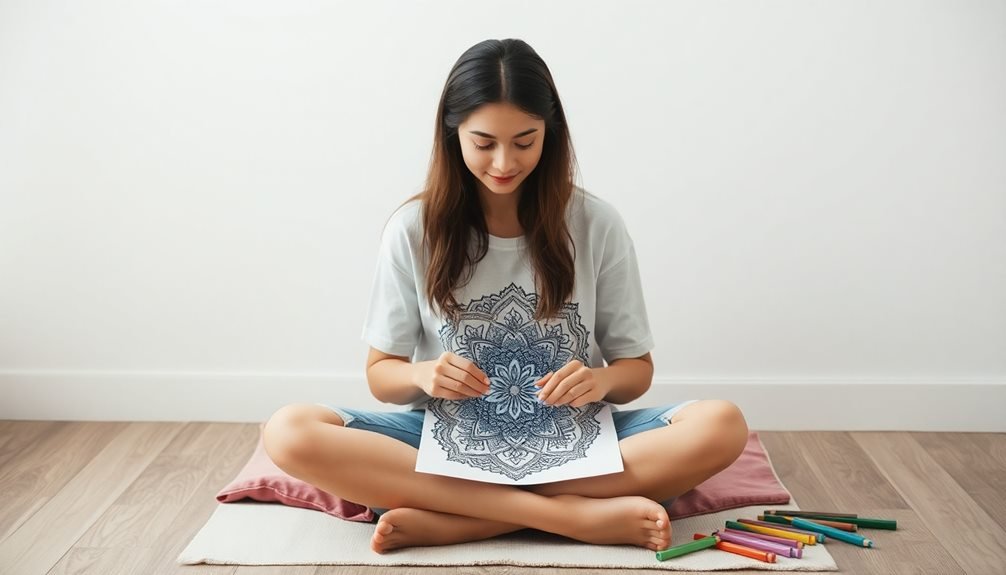
Mindfulness transforms ordinary coloring into a powerful anxiety-relieving practice. When you're feeling overwhelmed, incorporating mindful techniques while coloring can help you stay present and reduce stress. Focus on the sensations: the feeling of the crayon or marker in your hand, the sound it makes against the paper, and the way colors blend and interact.
To practice mindful coloring effectively, choose a quiet space where you won't be interrupted. Take deep breaths before you begin, and let go of any expectations about creating perfect art. It's not about the end result – it's about the journey of creating.
- Set an intention before starting: whether it's finding calm, releasing tension, or simply enjoying the moment.
- Choose colors based on your emotional needs – cool blues and greens for relaxation, warm yellows and oranges for energy.
- Work slowly and deliberately, coloring one section at a time while maintaining awareness of your breath.
If your mind wanders, gently bring your attention back to the coloring process. Notice the patterns, shapes, and spaces you're filling. This focused attention helps quiet racing thoughts and anchors you in the present moment.
Simple Geometric Designs
Basic geometric patterns provide an ideal starting point for anxiety-reducing coloring sessions. When you're feeling overwhelmed, start with simple shapes like circles, squares, and triangles arranged in repetitive patterns. These foundational designs won't overwhelm your mind, allowing you to focus solely on the calming motion of coloring.
You'll find that geometric mandalas offer a structured approach to therapeutic coloring. Begin at the center and work your way outward, using alternating colors to create satisfying symmetrical patterns. The predictable nature of these designs helps your brain establish a rhythm, naturally lowering stress levels.
For maximum anxiety relief, try working with interlocking patterns like hexagons or tessellations. These designs let you concentrate on one small section at a time, making the activity feel more manageable when you're experiencing heightened anxiety.
You can also experiment with different color combinations within each geometric shape, which helps maintain focus without becoming mentally taxing.
Don't hesitate to start with basic patterns and gradually progress to more complex geometric designs as your comfort level increases. The systematic nature of geometric coloring provides a sense of control and accomplishment.
Creating Your Own Coloring Templates
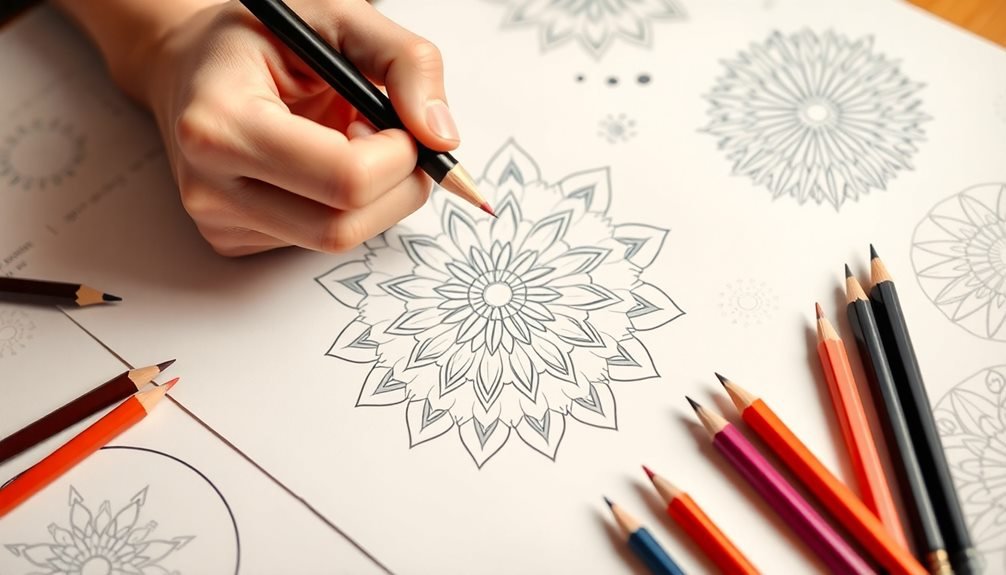
Creating personalized coloring templates offers a deeper level of engagement in your anxiety-management journey. When you design your own patterns, you're not just coloring – you're expressing your creative vision from start to finish.
You'll find that sketching your own designs allows you to tailor the complexity and subject matter to your current emotional state and artistic abilities. Start with basic shapes and gradually incorporate more intricate elements as your confidence grows.
You can use grid paper to maintain symmetry or free-draw organic shapes that reflect your feelings. Don't worry about perfection; even simple patterns can provide therapeutic benefits.
- Draw repeating patterns like waves, circles, or zigzags to create a meditative flow while designing
- Incorporate meaningful symbols or words that resonate with your personal journey
- Experiment with different section sizes to control the time you'll spend coloring
Once you've created your template, make multiple copies so you can try different color combinations.
You'll discover that both the design process and the subsequent coloring sessions help reduce anxiety while boosting your creative confidence.
Color Choice and Mood
When you're selecting colors for your anxiety-reducing coloring activities, you'll want to understand how different hues affect your emotional state.
Cool colors like blues and greens can help lower your stress levels and promote relaxation, while warm colors such as reds and oranges tend to boost your energy and stimulate your mind.
The intensity of the colors you choose also plays an essential role – softer, muted tones can feel more soothing, whereas bold, vibrant shades might heighten your emotional response.
Cool Colors Promote Calm
Colors have a powerful influence on our emotional state, and cool shades like blue, green, and purple naturally promote relaxation and tranquility. When you're feeling anxious, selecting coloring pages with these calming hues can help lower your heart rate and reduce stress levels. Research shows that cool colors can decrease blood pressure and slow down your breathing, making them ideal choices for anxiety-relief coloring sessions.
- Blue tones remind you of peaceful scenes like calm waters and clear skies, helping your mind drift into a more serene state.
- Green shades connect you with nature and growth, promoting feelings of balance and harmony.
- Purple combines the stability of blue with hints of warmth, creating a sense of spiritual wellness and inner peace.
You'll find that focusing on cool-colored designs while coloring can create a meditative experience. Try starting with simple patterns featuring these colors, and you'll likely notice your tension melting away as you fill in each space.
For maximum benefit, choose coloring books that mainly feature these soothing shades, or use cool-toned markers and pencils on black-and-white designs.
Warm Colors Stimulate Energy
While cool colors help you unwind, warm hues like red, orange, and yellow serve a different purpose in your coloring practice. These energetic colors can boost your mood, increase motivation, and help combat feelings of lethargy that often accompany anxiety.
When you're feeling sluggish or disconnected, incorporating warm colors into your coloring routine can help restore mental balance.
You'll find that red stimulates physical energy and can help you feel more grounded when anxiety makes you feel scattered.
Orange encourages creativity and social connection, making it ideal when you're struggling with isolation or creative blocks.
Yellow brightens your outlook and can lift your spirits during periods of depression that sometimes accompany anxiety.
To maximize the benefits of warm colors, try coloring mandalas or abstract patterns during morning sessions to energize your day.
You can also strategically use warm colors to highlight specific areas in your coloring pieces that you want to draw attention to.
If you're feeling overwhelmed by anxiety-induced fatigue, start with softer warm tones like coral or peach before progressing to more intense shades.
Color Intensity Affects Emotions
The intensity of your chosen colors plays a crucial role in managing anxiety through coloring activities. When you're feeling overwhelmed, selecting colors with the right intensity can help regulate your emotional state and create a more balanced mindset.
- Soft, muted tones like pastels can lower stress levels and promote relaxation during your coloring sessions.
- Bold, vibrant colors can boost your mood but might feel overwhelming when anxiety is high.
- Gradually shifting from light to darker shades lets you control emotional intensity as you color.
You'll find that lighter color intensities often work best when you're seeking calm, as they're less stimulating to your nervous system.
Consider using colored pencils rather than markers, as they allow you to adjust the pressure and create varying intensities within the same color family.
If you're working through anxious feelings, start with gentle, pale hues and slowly incorporate more saturated tones as you feel more centered.
This progressive approach helps you maintain control over your emotional response while engaging in the therapeutic benefits of coloring.
Remember that your color choices can shift based on your anxiety levels and emotional needs throughout the day.
Zentangle Art for Relaxation
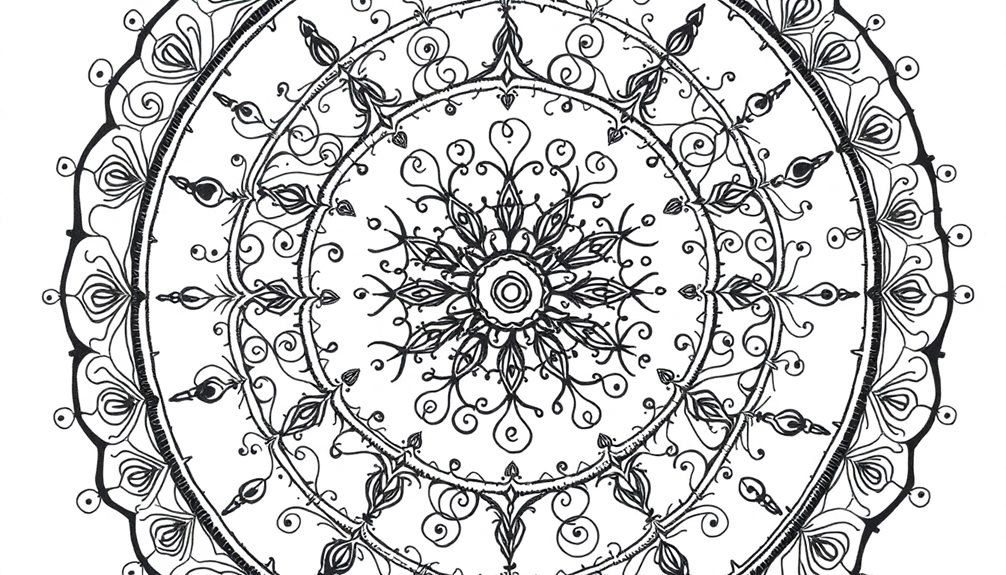
Drawing repetitive patterns in Zentangle art provides a meditative approach to managing anxiety. You'll find that creating structured doodles in small squares, called "tangles," helps quiet your mind and reduce stress. When you practice Zentangle, you're focusing on one stroke at a time, which naturally shifts your attention away from worrying thoughts.
| Basic Patterns | Benefits |
|---|---|
| Circles & Spirals | Promotes flow state |
| Straight Lines | Builds concentration |
| Curves & Waves | Enhances creativity |
| Dots & Stippling | Improves patience |
To start your Zentangle practice, divide a square paper into smaller sections and fill each with different patterns. You don't need artistic skills – the beauty of Zentangle lies in its simplicity and repetition. As you draw, you'll notice your breathing becoming steadier and your muscles relaxing. The structured nature of Zentangle makes it different from free-form doodling, as it combines the benefits of meditation with artistic expression. Many people find that 15-20 minutes of Zentangle practice can greatly reduce their anxiety levels and improve their focus throughout the day.
Time Management While Coloring
Successful time management during coloring sessions starts with setting clear boundaries for your practice. Whether you're coloring to reduce anxiety or simply to unwind, it's crucial to establish a routine that fits your schedule without becoming another source of stress.
You'll want to prioritize your coloring time by scheduling it during periods when you're most likely to feel anxious or need a break. Consider setting a timer to avoid losing track of time, especially if you're coloring during work breaks or before bedtime. It's better to color for 15 focused minutes than to rush through an hour-long session while watching the clock.
- Schedule your coloring sessions at the same time each day to build a consistent habit
- Keep your coloring supplies organized and easily accessible to maximize your designated time
- Set realistic goals for each session, such as completing one section or using specific colors
Don't feel pressured to finish an entire page in one sitting. Breaking your coloring project into manageable segments can help you maintain focus while ensuring you're not compromising other important activities in your daily routine.
Group Coloring Activities
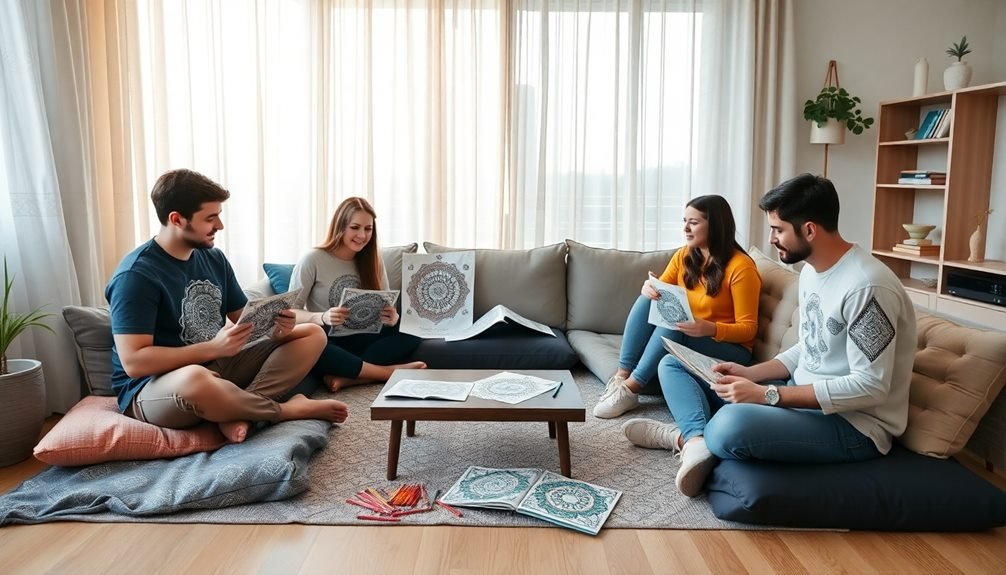
Beyond individual practice, group coloring activities create a supportive environment where people can connect while managing their anxiety together. You'll find that joining a coloring group or organizing one yourself can enhance the therapeutic benefits of this mindful practice. Local libraries, community centers, and mental health organizations often host coloring circles where you can meet others who share similar interests.
Start small by inviting friends for a coloring session at your home. You'll want to provide various coloring books, loose pages, and an assortment of coloring tools. Consider setting up a regular schedule, like weekly or monthly meetings, to maintain consistency.
During these gatherings, you can play calming background music and encourage gentle conversation. If you're looking for structured activities, try collaborative coloring projects where each person works on a section of a larger piece. You can also organize coloring exchanges, where participants swap their completed works.
Don't forget to incorporate mindfulness exercises or short meditation breaks between coloring sessions. These group activities won't just help manage anxiety; they'll also build meaningful connections and create a network of mutual support.
Digital Coloring Apps
While traditional coloring groups offer social connection, digital coloring apps provide a convenient alternative for managing anxiety on the go. You'll find thousands of designs at your fingertips, from mandalas to landscapes, all accessible through your smartphone or tablet.
These apps often include features like zoom capabilities, color palettes, and the ability to save and share your completed works.
Digital coloring apps have distinct advantages for anxiety management:
- You don't need to carry supplies, making them perfect for anxiety relief during commutes, waiting rooms, or stressful situations.
- Many apps include calming background music and ambient sounds that enhance relaxation.
- You can easily undo mistakes, eliminating the perfectionism-related stress common with traditional coloring.
When choosing a digital coloring app, look for one with an intuitive interface and smooth coloring mechanics. Apps like Colorfy, Pigment, and Lake offer premium features like advanced brush styles and exclusive patterns.
You'll also find that most apps provide both free and subscription options, letting you test the waters before committing.
Remember to adjust your screen's brightness and take regular breaks to prevent eye strain while enjoying your digital coloring session.
Frequently Asked Questions
Can Coloring Activities Interfere With Prescribed Anxiety Medications?
You don't need to worry about coloring interfering with your anxiety medications. It's a safe complementary activity that won't affect your prescriptions. Always consult your doctor if you have specific concerns.
What Are the Best Lighting Conditions for Anxiety-Reducing Coloring Sessions?
You'll want soft, natural lighting or warm artificial light for your coloring sessions. Avoid harsh fluorescent lights. Position yourself near a window during daylight hours or use adjustable desk lamps with warm bulbs.
How Long Should Colored Artwork Be Kept for Maximum Therapeutic Benefit?
You don't need to keep your colored artwork forever. Display pieces that bring you joy for a few weeks, then photograph them if you'd like. It's the coloring process itself that provides therapeutic benefits.
Do Different Coloring Tools Create Varying Levels of Anxiety Relief?
You'll find that different tools offer unique calming effects. Soft pencils and markers provide smooth, flowing relief, while precise fine-liners give focused relaxation. Crayons offer nostalgic comfort and colored pencils enable gentle control.
Can Coloring Activities Become Addictive or Create Emotional Dependencies?
While you won't get physically addicted to coloring, you can develop an emotional reliance on it. Like any coping mechanism, you'll need to balance it with other stress-relief methods to maintain healthy habits.
In Summary
You've discovered that coloring isn't just a childhood pastime but a powerful tool for managing anxiety. Whether you're filling in intricate mandalas, drawing zentangles, or using digital apps, you're engaging in a mindful practice that can calm your nervous system. Make coloring a regular part of your self-care routine, and don't forget to experiment with different techniques and patterns to find what works best for you.

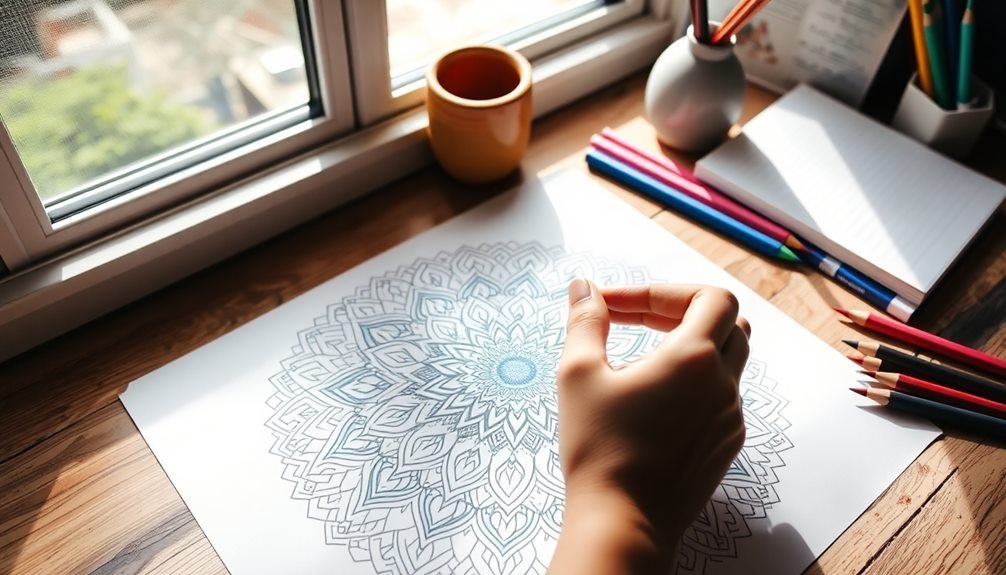
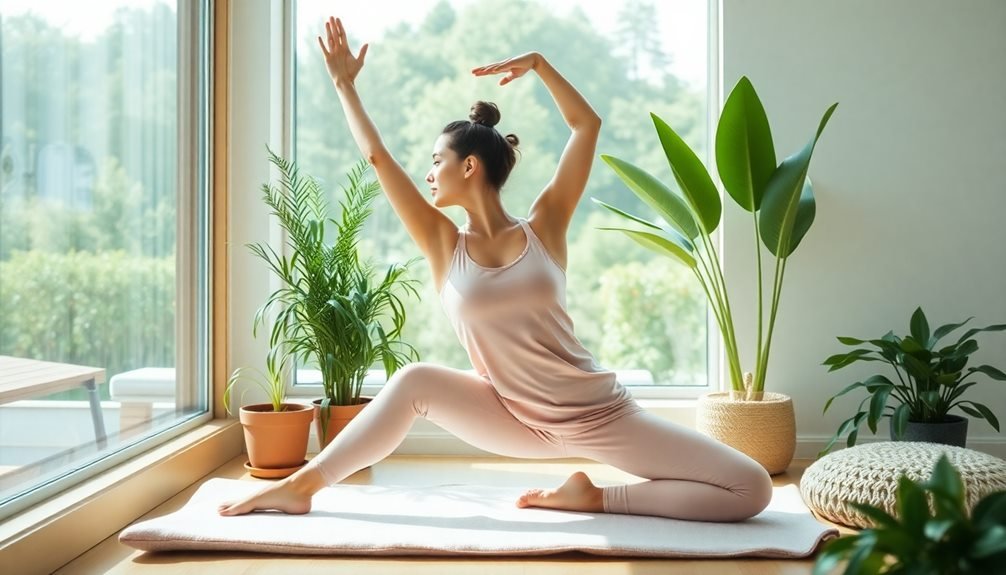
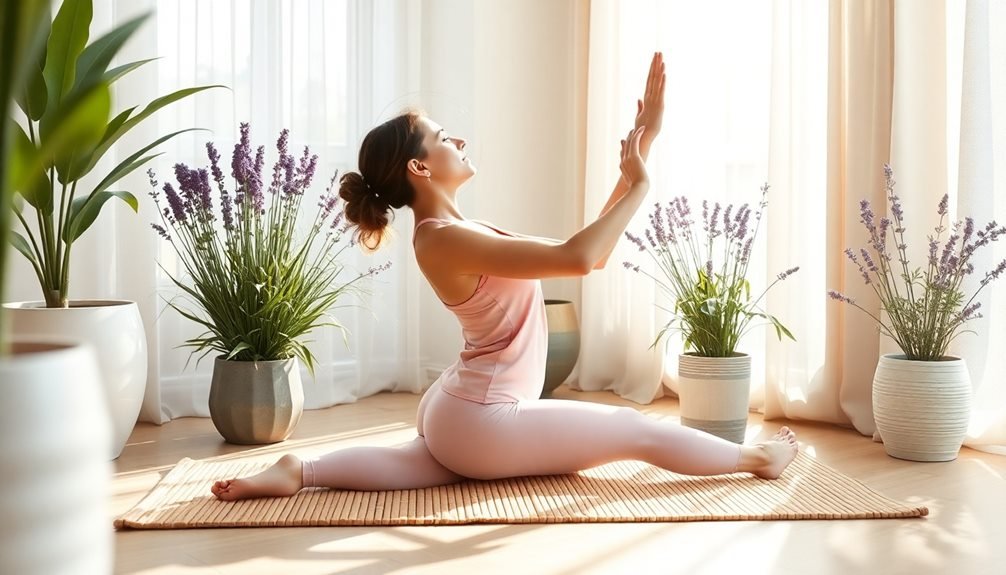
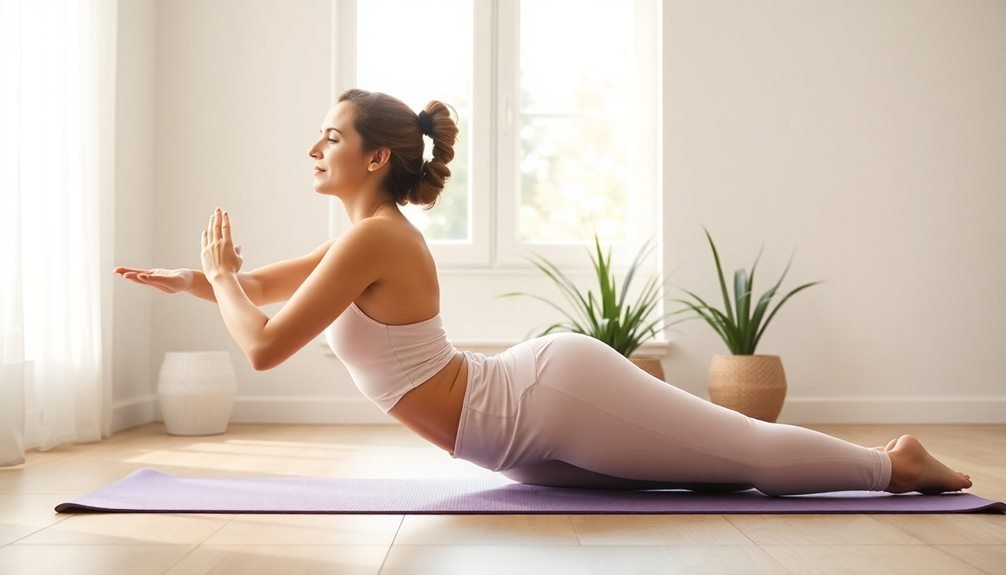
Leave a Reply